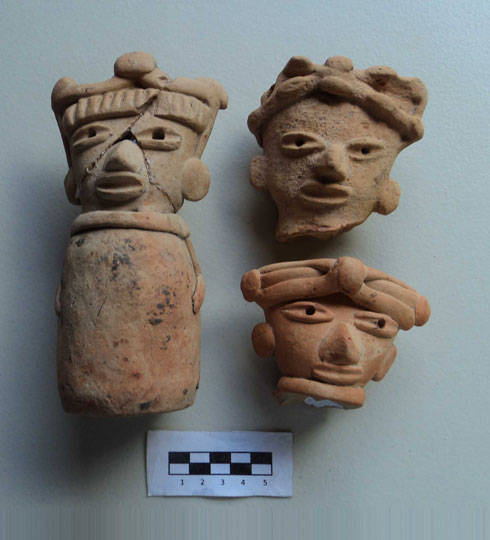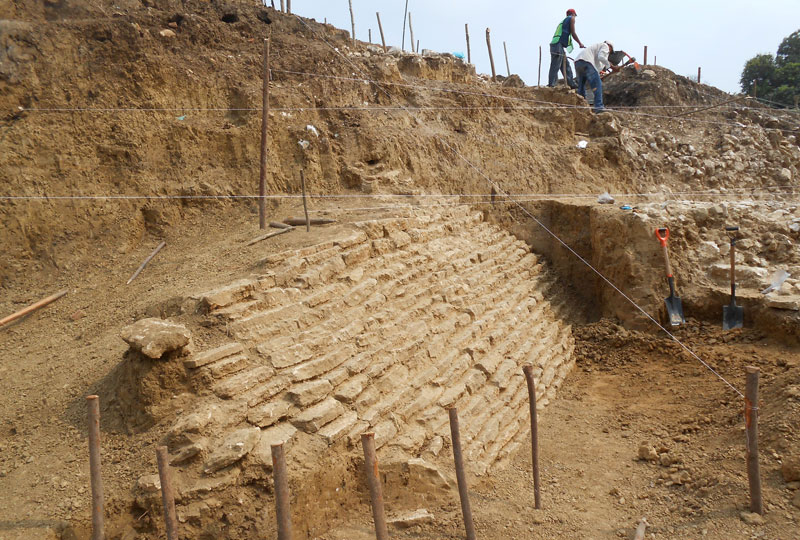Ancient Graves, Pyramid Ruins Found in Mexico

Construction work in eastern Mexico exposed an ancient settlement, including 30 skeletons and the ruins of a pyramid, believed to be up to 2,000 years old, archaeology officials announced.
At the site of the graves in the town of Jaltipan, southeast of Veracruz, archaeologists also found clay figurines, jade beads, mirrors and animal remains, according to the National Anthropology and History Institute, or INAH.
Researchers believe the settlement was occupied from around the first century A.D. until A.D. 600 or 700. Little is known about the people who lived there. The skeletons are set to be analyzed so that researchers can learn about how they were treated for burial. [In Photos: Ancient Egyptian Skeletons Unearthed]
"All that is known so far is that of the 30 burials, two at least belong to infants," explained archaeologist Alfredo Delgado in a statement from INAH.
Deer antlers and bones that may belong to dogs, coyotes, deer, fish and birds were buried with the bodies, perhaps as animal companions for the underworld, the researchers said. There's also evidence that the inhabitants of the site were fossil collectors; among the numerous prehistoric remains were the fossilized teeth of a long extinct Megalodon-type shark.
The artifacts found at the site represent more than one culture. Some figurines and brickwork look Mayan, while there was also pottery that looks like it came from ancient city of Teotihuacan, the researchers say.
"Analyses will enable us to see whether this site was multicultural, as is indicated by the materials found, or whether the inhabitants were all of the same genetic type," Delgado said.
Get the world’s most fascinating discoveries delivered straight to your inbox.
The pyramid found on a hill near the burials is made of stone slabs and stretches 39 feet (12 meters) tall and looks Mayan or Tajin in style, the researchers believe. While pre-Columbian stone monuments have been found in Los Tuxtlas and the Sierra de Santa Marta, archaeologists say this type of ancient stone architecture has rarely been found in the southern part of the state of Veracruz.
The team says they also discovered bricks in Jaltipan resembling those found at Comacalco, a Mayan city 74 miles (120 kilometers) away in the Tabasco region.
Follow Megan Gannon on Twitter and Google+. Follow us @livescience, Facebook & Google+. Original article on LiveScience.com.




